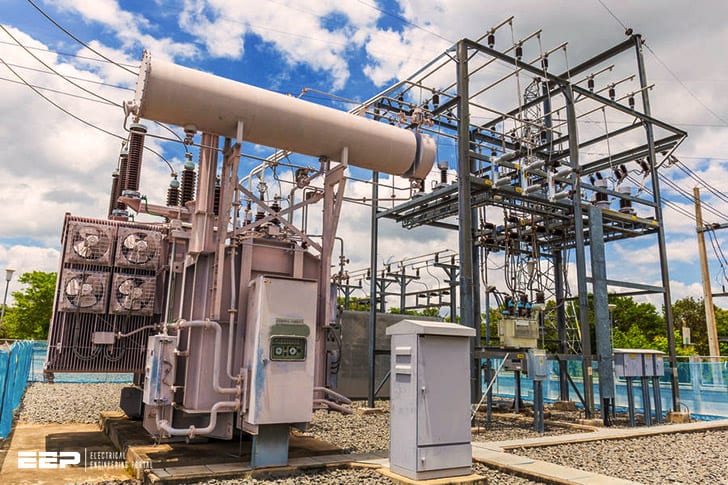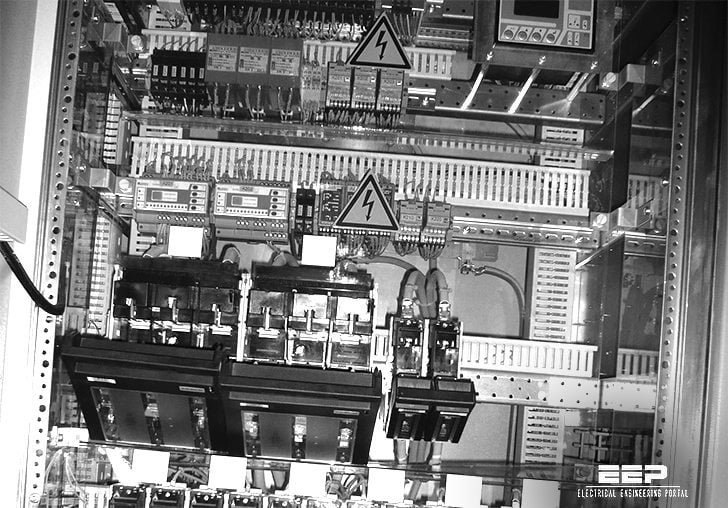A substation is a power system facility where voltage is transformed from high to low, or the reverse, using transformers. Switchgear is used to protect and control electrical equipment in a substation.
If you’re in the market for new substation switchgear, there are a few things to keep in mind. First, you need to decide what voltage level you need – low voltage (less than 1000 volts), medium voltage (1000-69 kV), or high voltage (more than 69 kV). Next, consider the environment in which the switchgear will be used – indoor or outdoor.
Finally, think about the amount of space you have available and whether you need compact equipment. With all of these factors in mind, you’ll be able to narrow down your options and find the best substation switchgear for your needs.
Types of Switchgear – Substation Equipment & Switching Devices – Protection & Switchgear Engineering
Types of Switchgear in Substation
Substation switchgear is the equipment used to connect, disconnect, or change the voltage in a high-voltage electrical system. This equipment is typically used in substations, which are facilities where electricity is converted from one form to another, such as from alternating current (AC) to direct current (DC), or from high voltage to low voltage.
There are three primary types of switchgear used in substations: air-insulated switchgear (AIS), gas-insulated switchgear (GIS), and circuit breaker switchgear.
AIS uses air as an insulator between live electrical components, while GIS uses gas, such as sulfur hexafluoride (SF6). Circuit breaker switchgear includes circuit breakers that interrupt the flow of electricity in case of an overload or fault.
AIS is the most common type of substation switchgear.
It is less expensive than GIS and does not require as much maintenance. However, AIS takes up more space than GIS because of the larger air insulation tanks. AIS is also more likely to be affected by weather conditions, such as wind and rain.
GIS has a smaller footprint than AIS and is less likely to be impacted by weather conditions. However, GIS is more expensive than AIS and requires more maintenance because of the need to replenish the SF6 gas over time.
Circuit breaker switchgear can be either AIS or GIS.
Circuit breakers are used to protect equipment from damage due to faults or overloads by interrupting the flow of electricity. They are designed to automatically open and close based on preset values for current, voltage, power factor, or frequency.
High Voltage Switchgear
High voltage switchgear is an important component of any electrical system. It is used to control, protect and isolate electrical equipment from high voltages. High voltage switchgear is available in a variety of designs, sizes and configurations to suit the specific needs of the application.
Substation Switchgear Components
Substation switchgear is the equipment used to protect and control substation equipment. The three major types of switchgear are air-insulated, gas-insulated, and solid-dielectric.
Air-insulated switchgear uses air as an insulating medium between live parts.
Gas-insulated switchgear uses a dielectric gas, such as sulfur hexafluoride or carbon dioxide, to maintain an electrical barrier between live parts. Solid-dielectric switchgear uses a nonconducting solid material, such as rubber or plastic, to maintain an electrical barrier between live parts.
The main components of substation switchgear are circuit breakers, disconnect switches, transformers, and capacitors.
Circuit breakers are used to open and close electrical circuits by interrupting the flow of current. Disconnect switches are used to physically disconnect circuits. Transformers change the voltage of electric power while it is being transmitted from one location to another.
Capacitors store electric charge and help regulate voltage in circuits.
Switchgear And Protection
Switchgear and protection are two important aspects of the electrical power system. Switchgear is the equipment used to control, protect and isolate electrical equipment. Protection is the devices and systems used to prevent or mitigate the effects of faults on the electrical power system.
Switchgear is used to control the flow of electricity in the power system. It includes circuit breakers, fuses, relays and other devices. Switchgear is used to isolate equipment from the rest of the power system when maintenance or repairs are required.
It can also be used to protect equipment from faults by disconnecting it from the power system when a fault occurs.
Protection devices are used to prevent or mitigate the effects of faults on the electrical power system. They include circuit breakers, fuses, relays and other devices.
Protection devices are used to detect faults and interrupt the flow of electricity to protect equipment from damage.
Switchgear And Transformer
Switchgear is defined as an assembly of electrical disconnect switches, fuses or circuit breakers used to control, protect and isolate electrical equipment. Switchgear is used both to de-energize equipment to allow work to be done and to clear faults downstream. This type of gear is used in a wide variety of applications including industrial, commercial, mining and utility.
A transformer is an electrical device that transforms the energy in one form into another. For example, a common household transformer converts 110 volts alternating current (AC) from the utility company’s lines into 240 volts AC for use in the home. The energy transformation occurs because the transformer uses two sets of coils – primary and secondary – that are magnetically linked but not electrically connected.
When electricity flows through the primary coil it creates a magnetic field; this flux linkage between the two coils causes electricity to flow through the secondary coil.
Switchgear Function
Switchgear is a device that controls, regulates and switches the flow of electricity in an electrical system. It is an essential component in the safe operation of any electrical system, as it protects against overloads and short circuits.
There are two main types of switchgear: low voltage (LV) and high voltage (HV).
LV switchgear is used to control the flow of electricity up to 1 kV, while HV switchgear is used for voltages above 1 kV.
The most common type of LV switchgear is circuit breakers, which are used to protectagainst overloading and short-circuiting. Circuit breakers work by automatically opening and closing the circuit when they detect an abnormal condition.
HV switchgear is more complex than LV switchgear due to the higher voltages involved. The three main types of HVswitchgear are air-insulated (AIS), gas-insulated (GIS) and hybrid (HIS). AIS uses air as an insulating medium between live parts, GIS uses gas instead of air, while HIS uses a combinationof both air and gas.
Switchgears play a vital role in ensuring the safe operation of electrical systems. They protect against overloadingand short circuits, which can cause serious damage or even death if left unchecked. If you have any questions aboutswitchgear or its function, please don’t hesitate to contact your local electrician for more information.
Gas Insulated Switchgear
Switchgear is a critical component of any electrical system, and gas insulated switchgear (GIS) is one of the most reliable and rugged types available. It’s also one of the most expensive, so it’s important to understand its capabilities and limitations before making a purchase.
GIS consists of three basic components: circuit breakers, disconnectors, and transformers.
The circuit breakers are used to open and close circuits, while the disconnectors allow for isolation of equipment for maintenance or repair.Transformers step down or up voltage levels as needed.
GIS is typically used in high-voltage applications where reliability and space are paramount concerns. Its hermetically sealed design protects against environmental contamination and its compact footprint saves valuable floor space.
One potential downside of GIS is that it can be difficult to retrofit into existing facilities due to its size and weight. Additionally, GIS requires highly trained personnel for installation and maintenance, which can add to overall costs.

Credit: electrical-engineering-portal.com
What is Difference between Switchgear And Circuit Breaker?
Circuit breakers and switchgear are two important components of an electrical system. Circuit breakers are used to protect circuits from overloading, while switchgear is used to control the flow of electricity. Both circuit breakers and switchgear are rated by their voltage and current capacity.
What Does a Switchgear Do?
Switchgear is an important part of any electrical system. It is used to control, protect and isolate electrical equipment. Switchgear is used in a variety of applications, from small residential systems to large industrial plants.
Switchgear consists of two main components: the switch and the gear. The switch controls the flow of electricity while the gear protects the switch from overloads. Switchgear can be manually operated or automated.
Manually operated switchgear requires someone to physically operate the switch in order to open or close it. Automated switchgear uses sensors and other devices to automatically open or close the switch based on predetermined conditions. Automatedswitchgear can be controlled remotely, which is often useful in situations where it is not possible or safe for someone to be physically present at theswitchgear location.
Switchgears are available in a variety of designs, depending on their intended application. Some common types of switchgear include air-insulatedswitchgears (AIS), oil-filled switchgears (OFS), gas-insulated switchgears(GIS) and vacuum-operatedswitchgears (VOS). AIS are most commonly used in lower voltage applications while GIS are typically used in high voltage systems such as those foundin utility transmission and distribution networks.
What is the Difference between Switching Station And Substation?
In the electrical power industry, a substation is a facility where voltage is transformed from high to low, or the reverse, using transformers. A switching station performs a similar function but uses switches instead oftransformers. Both types of facilities are typically located between the generating plant and consumer, and are owned by the utility company that provides electricity to the area.
The main difference between a substation and a switching station is that at a substation, voltage is transformed from high to low (or vice versa), while at a switching station, electricity is redirected without any change in voltage. Substations are typically used to connect different parts of the electrical grid, while switching stations are used to route electricity within a specific area.
What are the Three Types of Substations?
Substations come in a variety of shapes and sizes, but all perform the same basic function: to take electricity from the high-voltage transmission system and step it down to a lower voltage so it can be safely used by consumers. There are three main types of substations:
1. Transmission Substations
2. Distribution Substations
3. Generation Substations
1. Transmission Substations: Transmission substations take electricity from the high-voltage transmission grid and transform it into a lower voltage that can be used by distribution substations.
These substations are typically located between major generation plants and load centers, such as cities. Large transformers within transmission substations Step-Down the voltage to a level that can be handled by distribution equipment and circuits.
2. Distribution Substations: Distribution substations receive power from transmission or generation substATIONSand deliver it to consumers through lower voltage distribution lines.
These substATIONSare typically located near load centers, such as neighborhoods or industrial parks. The primary piece of equipment in a distribution substation is a transformer that steps down the voltage for safe use in homes and businesses served by the distribution line connected to the substation..
3 3. Generation SubstATIONS: A generation station is where electricity is produced – most often using steam turbines powered by natural gas, nuclear reactions, waterfalls or windmills.. Generating stations are usually located away from load centers because they require large tracts of land and access to fuel sources.
. The electricity generated at these facilities flows through high-voltage wires to transmission substATIONSbefore being distributed to consumers through lower voltage lines..
Conclusion
In a substation, the switchgear is used to control, protect and isolate electrical equipment. It also provides a safe working environment for personnel. The main components of switchgear are switches, circuit breakers and fuses.
Switches are used to connect or disconnect circuits while circuit breakers are used to interrupt the flow of current in case of an overload or fault. Fuses provide protection against overcurrents.


